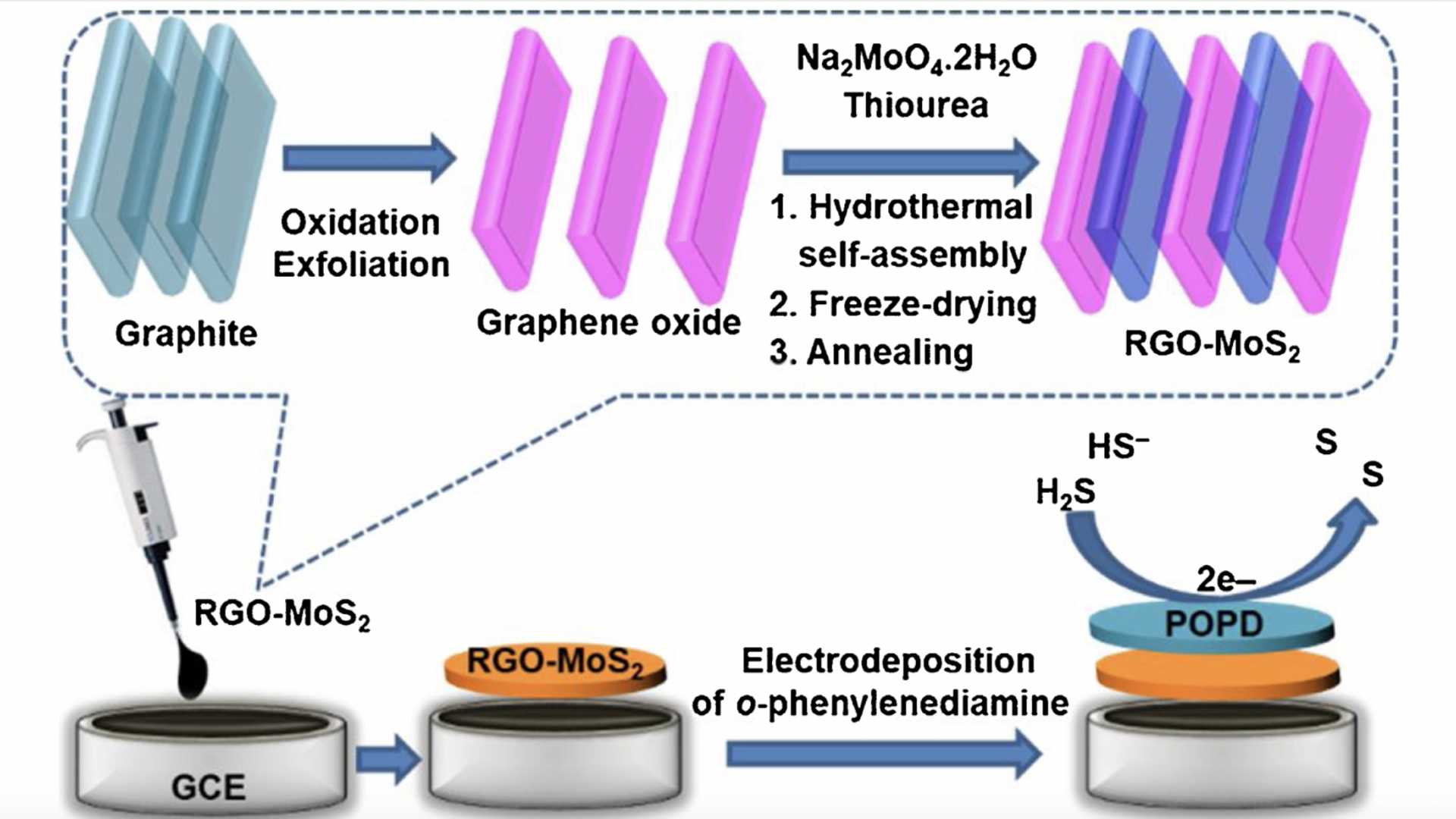Nithiya Jeromiyas, et al., " Anti-poisoning electrode for real-time in-situ monitoring of hydrogen sulfide release" Sensor and Actuators B: Chemistry 7 (10), 2020, 128844.
Electrode poisoning and interferences from complex biological environments are major challenges in the development of in-situ H2S sensors. To circumvent these issues, herein a robust electrode based on reduced graphene oxide-molybdenum disulfide nanohybrid (RGO-MoS2) and polymerized o-phenylenediamine (POPD) is developed. The POPD/RGO-MoS2-modified electrode catalyzed H2S oxidation at a minimized overpotential (+ 0.15 V vs. Ag/AgCl). A new strategy based on inherent material properties was implemented to alleviate the electrode-poisoning problem. The nano-tailored interface blocks 2.5-fold surplus levels of interferences because of its exclusive size-exclusion property and electrostatic interactions. Moreover, this method with a response time of fewer than 5 s displayed a detection limit of 10 nM, which covers the endogenous H2S levels. Practicality tests in various biological media yielded valuable recoveries of 96.4–97.8%. The amounts of H2S released from the bacterial cells were quantified in real-time over a continuous time span of 5 h.
